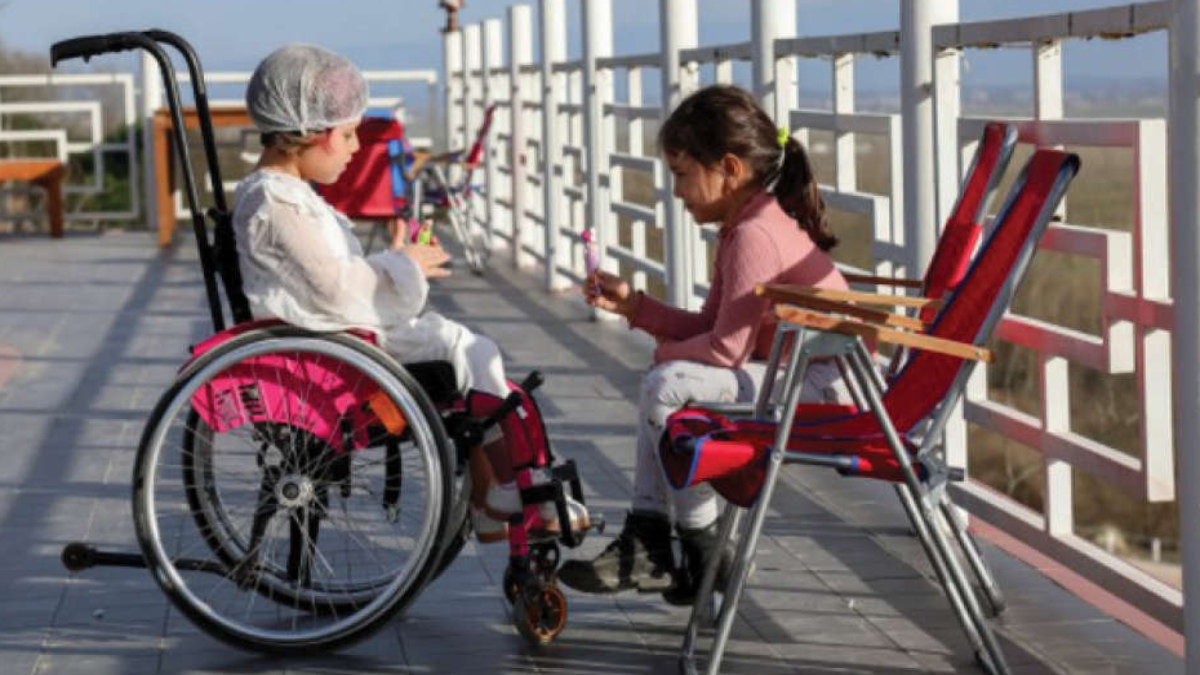
Scientists report that children with cerebral palsy benefited most from 60 hours of Constraint-Induced Movement Therapy (CIMT) over four weeks.
The findings of the study were published in the journal ‘Pediatrics’.The study also showed that intensive therapy did not add stress for families. The findings could have far-reaching impacts on the treatment of children’s movement disorders.
The study by researchers at Virginia Tech’s Fralin Biomedical Research Institute at VTC, UVA Children’s, The Ohio State University, and Nationwide Children’s Hospital, has shown that higher doses of CIMT therapy — 20 three-hour sessions over four weeks — yield significant and lasting improvement in the use of their arms and hands, especially in everyday functional activities.
The Children with Hemiparesis Arm-and-hand Movement Project (CHAMP) study is the first to compare different dosage levels of the same type of CIMT intervention for similar children.
The study was funded by the National Institutes of Health’s Eunice Kennedy Shriver National Institute of Child Health and Human Development.
“CHAMP provides new findings that are practically useful for clinicians and families in choosing treatment likely to produce meaningful benefits for children with hemiparetic cerebral palsy,” said Sharon Landesman Ramey, Distinguished Research Scholar at the Fralin Biomedical Research Institute and professor of psychiatry, psychology, and neuroscience at Virginia Tech, who led the study and is the paper’s corresponding author.
The study focused on children with hemiparetic cerebral palsy (HCP), the most common childhood neuromotor disorder. Cerebral palsy affects one to four children per 1,000 in the United States, and about 40 per cent of these children will develop hemiparesis — impaired voluntary control on one side of the body, according to the Centers for Disease Control and Prevention.
The study group included 118 children with HCP, two to eight years old, at three sites — Roanoke and Charlottesville in Virginia and Columbus, Ohio. CHAMP randomised and assigned children to different CIMT treatment groups that varied in their dosage level (30 versus 60 hours in four weeks) and the type of constraint used (cast versus splint). These treatment groups were compared with a Usual and Customary Treatment group — that later was offered a form of CIMT as an ethical option for study participation.
The form of CIMT therapy, known as ACQUIREc, was developed by co-principal investigators Stephanie DeLuca and Ramey, who also co-direct the Fralin Biomedical Research Institute at VTC Neuromotor Research Clinic, along with Karen Echols and other colleagues at the University of Alabama at Birmingham.
The CHAMP study found that the higher intensity therapy sessions — three hours a day, five days a week for four weeks — significantly improved upper arm and hand abilities while a lower dosage of 30 hours per month (2.5-hour sessions, three days a week for four weeks) produced fewer gains. The children’s early improvements continued for at least six months after higher-intensity CIMT.
The therapy can be life-changing for children. Kim Hindery, whose daughter, Abigail, 6, was part of the study in Ohio, witnessed a dramatic difference during and then after the therapy.
“I could literally see her brain changing. I’ll never forget when she looked up at her hand and goes, ‘Oh!’ — just mesmerised, like, ‘It exists!’ Being able to see a light bulb go off in your child’s head that you never thought you would see go off is priceless,” Hindery said.
Those benefits are well-known to DeLuca who has overseen the delivery of ACQUIRE therapy to more than 500 children.
“The therapists are trained to ensure each child has many successes in every therapy session,” said DeLuca, who is an associate professor at the research institute and in paediatrics and neuroscience at Virginia Tech.
“The child sees and feels their improvement and becomes an active partner in the therapy. ACQUIRE therapy increases children’s willingness to tackle new and difficult activities,” DeLuca added.
The study shows parents who worried about the intensity of the therapy and use of the cast that they should have little concern. The study also unexpectedly showed that Usual and Customary Treatment benefited children more than it did in the past, which Landesman Ramey said should be reassuring to parents whose children receive other forms of therapy.